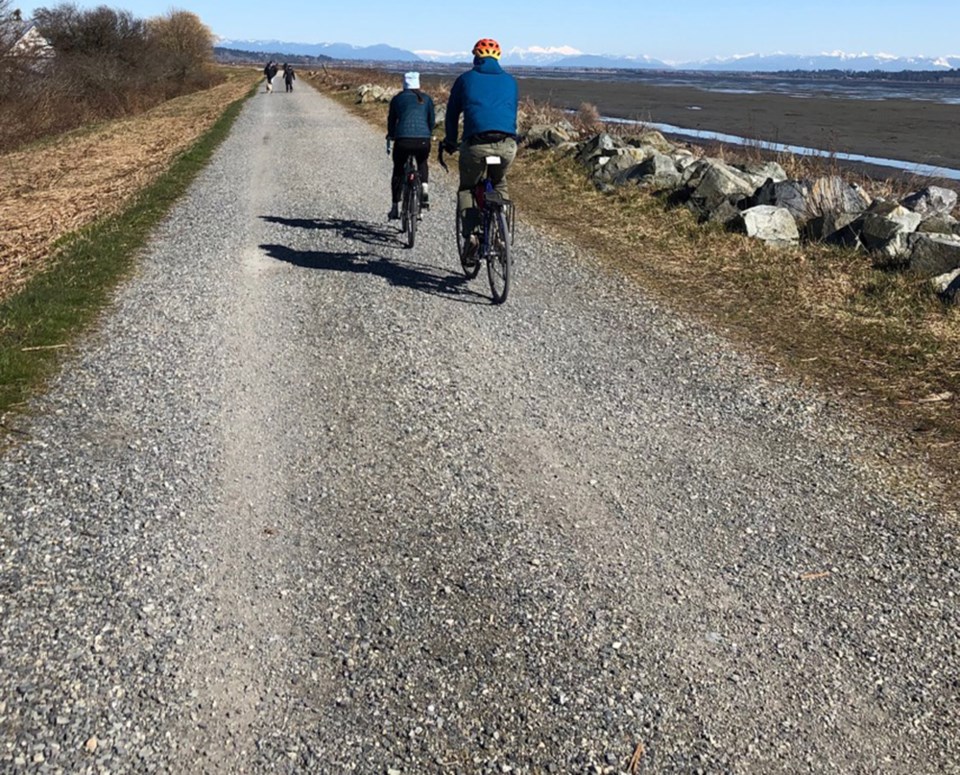The club that speaks for those on two wheels has a modest proposal for whenever a Delta dike is raised to prepare for rising sea levels.
Should those millions ever be spent on dike improvement, HUB Cycling would like a sheet of asphalt laid on top of the dike, once all the work has been done. That smooth surface could make for speedier cycling commutes and encourage users of all abilities by making easier riding for whoever’s using the dike trail.
A few trails that get such treatment could be a big boost for cycle tourism.
“Think Holland,” said Neil Pope, with the Delta branch of HUB Cycling. “They have done it in an amazing way and it’s a huge tourist draw. We’ve got the makings of some world-class cycling here.”
Pope mentions the idea about cycling safety and the recent incident when a cyclist blocked a farmer on the Boundary Bay Regional Park dike who was trying to get to a field.
He said the cycle club isn’t trying to decide which dikes get raised, it just wants whatever dikes that are improved, to be paved so they’re usable for a large variety of people.
Delta's Flood Management Strategy identifies a number of locations for possible dike upgrading over the next decade.
The city is currently focusing on five proposed upgrade projects: the East Delta dike, Beach Grove/Boundary Bay, Westham Island, River Road West and River Road/Lower Cougar Creek.
With climate change, sea level rise is a significant threat for the lowlands of Delta, especially along Boundary Bay, according to a Delta staff report, adding the existing coastal dikes are 3.5 metres high and currently do not adhere to the province's seismic guidelines.
That report states preliminary cost estimates for the first phase indicate that dike upgrades to 2050 could cost more than $350 million.
Seismic upgrading could cost an additional $300 million.
The cycling club hasn’t made any formal presentation for the idea of paving raised dikes, but Pope said he mentions it to politicians where possible.
“We’ll keep talking about it and we’ll see. You never know,” he said.
Just as an example, if the dike trail (from around Beach Grove in Tsawwassen to Mud Bay in Surrey) was paved, it could serve as a cycle commuting link between Surrey, North Delta and Tsawwassen, along with easier recreational riding.
But dikes will be upgraded depending on where there’s the biggest flood risk, which he supports, he added.
He also notes the increased use of the dikes by all users requires safe riding. Cyclists should use a bell or their voice to warn pedestrians they’re approaching, and cyclists on e-bikes or gravel bikes who can ride at high speed, need to slow when they approach people.
Cycling safety is crucial, he said.
“Never assume a motorist sees you if you’re riding. Cyclists should be particularly careful at intersections and driveways. And wear a bike helmet and bright clothing and ensure your bike has lights and reflectors,” he said.



